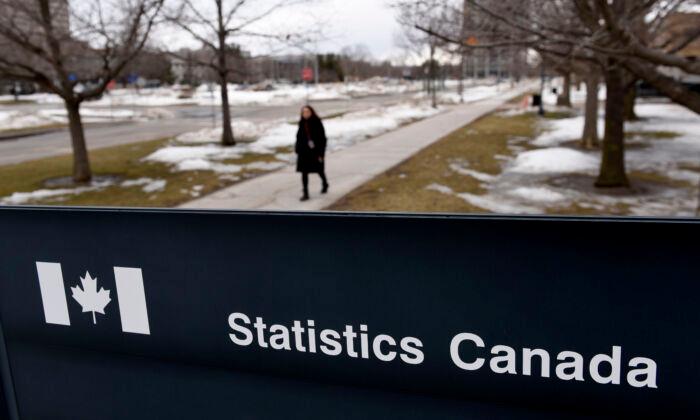Following warnings that there are over one million more non-permanent residents (NPRs) living in Canada than official estimates suggest, Statistics Canada (StatCan) said it “stands behind its numbers,” but will revise the way it counts NPRs.
“As planned, StatCan will publish new data tables on NPRs starting on September 27 that will be computed using a revised methodology and going back to 2021,” a spokesperson from StatCan told The Epoch Times in an email.
“We constantly evaluate and review our methodology to consider emerging demographic trends and new data needs.”
StatCan said that while the demographic statistics on the number of NPRs in Canada were “accurate,” the amount increased “strongly” in 2022.
“It was the first year where the number of NPRs increased faster than the number of permanent residents (immigrants) and this new trend is holding true for 2023 so far,” they said.
“We suggest that the official number of NPRs that is widely quoted and used for planning purposes undercounts the actual number of NPRs residing in Canada by close to one million. That means that any policy aimed at capping the number of NPRs is more urgent than perceived,” said the report.
Two Counting Issues
The first issue cited by the CIBC report was the undercounting of NPRs in a 2011 census by more than 40 percent.The second issue, the report noted, was that StatCan’s system assumes temporary resident (TR) visa holders have left the country 30 days after the expiry of their visa, while the majority remain while they wait to apply for permanent residency in Canada.
“There is no known administrative action by Immigration, Refugees and Citizenship Canada (IRCC) to remove these expired TR visa holders from Canada. Nor is there a known mechanism to withdraw their employment or tax slip issuances by the Canada Revenue Agency,” said the report.
StatCan said the agency always considered there could be a “short interruption period” due to administrative delays between the end of a temporary permit and its renewal. They said the agency developed a 30-day rule so that NPRs with short interruptions would still be considered as residing in Canada.
The CIBC report noted that many expired TR visa holders could not return to their home countries in 2020 and 2021 due to the COVID-19 pandemic.
“We are aware that the interruption periods increased during the pandemic,” StatCan said.
While StatCan said the counting of NPRs for the census “can be more challenging than that of other groups,” the agency conducts regular coverage studies to gain accurate estimates.
‘Immigration Ambition’
Housing has become a major affordability issue in Canada with the Canadian Real Estate Association reporting in 2023 that the average price of a home in Canada had hit $716,000.Housing Minister Sean Fraser, who was previously the immigration minister before the cabinet shuffle in late July, said in an interview with the Globe and Mail that it is “possible that there are more people, particularly temporary residents,” who have remained in Canada and not officially been tallied.
“But I don’t think that demonstrates that there’s a lack of preparation on the immigration-versus-housing conversation,” Mr. Fraser said, adding that he does not believe meeting Canada’s housing goals involves decreasing the country’s “immigration ambition.”
Prime Minister Justin Trudeau said in a press conference on Aug. 21 that the high immigration was necessary to build more housing.
“One of the things I have heard consistently in the construction industry is the lack of labour: more carpenters, more skilled labourers, more folks to work in the construction industry to build the homes that we are needing to match the growing economy that we have right across the country,” Mr. Trudeau said.
Conservative leader Pierre Poilievre said on Aug. 29 that he would be open to limiting the number of international students entering Canada to help alleviate the country’s housing problems. He said student numbers will be “determined by the availability of spaces at universities and homes for those students.”






